Texas Instruments Digitally Programmable, Time-Continuous Active Filter Application notes
- Type
- Application notes

Programmable active filters have increased in popularity
over the past decade. With the advent of switched capacitor
topologies, filter parameters such as the natural frequency
and filter Q can be changed simply by varying the clock
frequency. But switched capacitor filters are sampled data
systems and are subject to anomalies such as clock
feedthrough noise and aliasing errors.
The circuit in Figure 1 shows how an analog, digitally
programmable filter can be built using a UAF42. This
monolithic, state-variable active filter chip provides a two
pole filter building block with low sensitivity to external
component variations. It eliminates aliasing errors and clock
feedthrough noise common to switched capacitor filters.
Lowpass, highpass, bandpass and notch (band reject) out-
puts are available simultaneously.
FIGURE 1. Digitally Programmable Analog Filter.
DIGITALLY PROGRAMMABLE, TIME-CONTINUOUS
ACTIVE FILTER
by Johnnie Molina, (602) 746-7592
APPLICATION BULLETIN
®
Mailing Address: PO Box 11400 • Tucson, AZ 85734 • Street Address: 6730 S. Tucson Blvd. • Tucson, AZ 85706
Tel: (602) 746-1111 • Twx: 910-952-111 • Telex: 066-6491 • FAX (602) 889-1510 • Immediate Product Info: (800) 548-6132
50kΩ
50kΩ
UAF42
11
50kΩ
C
1
1000pF
C
2
1000pF
13 8 7
14
1
10kΩ
R
F1
13kΩ
50kΩ
10kΩ
R
G
49.9kΩ
R
Q
35.4kΩ
10kΩ
DAC7541A
OPA627
1
18154
Pins
17
R
F2
13kΩ
DAC7541A
OPA627
1
18154
Pins
17
In
2
3
4
9 10
V– V+
Aux Amp
Out
12
High-Pass
Out
Band-Pass
Out
Low-Pass
Out
Notch
Out
5
D
1
- D
12
Digital
Word
In
6
22
(NC)
(13)
(7) (1)
©
1994 Burr-Brown Corporation AB-062 Printed in U.S.A. February, 1994
SBFA005

2
The circuit uses the UAF42 state-variable filter IC, two op
amps, a few resistors and two common MDACs. Capacitors
aren’t required because the UAF42 has on chip 1000pF,
0.5% precision capacitors. The MDACs function as voltage
attenuators which influence the unity-gain bandwidth of the
integrators on board the UAF42. The filter’s natural fre-
quency, f
O
, is described by the following relationships:
(1)
Where:
and,
X = digital word at DAC inputs D
1
– D
12
n = number DAC bits
BUILD A NOTCH FILTER
For example, to program a 60Hz notch filter with the circuit
shown in Figure 1, the digital word to the MDAC is given
using Equation 1,
X = 6.28 • 10
–9
• R
F
• f
O
• 2
n
Given that,
f
O
= 60 R
F
= 13kΩ n = 12
then,
X = 20.1
The 12-bit digital word to the DAC should be 20 or
000000010100. The rounding error introduced is 0.3%
(f
NOTCH
= 59.8Hz). Note that the natural frequency, f
O
, is
equal to f
NOTCH
.
Figure 2 shows the response seen at the band reject or
“Notch Out” node.
The highpass, bandpass and lowpass outputs yield the re-
sponses shown in Figure 3.
FIGURE 2. 60Hz Notch Response.
f
O
= DAC
GAIN
•f
O
MAX
DAC
GAIN
=
X
2
n
R
F
= R
F1
= R
F2
f
O
MAX
=
1
2•π•10
–9
•R
F
HIGHPASS OUT
–9
1
f
–3dB
= 60Hz
10 100 1000
Gain (dB)
–6
–3
0
3
FIGURE 3. Highpass, Lowpass and Bandpass f
O
= 60Hz
Response.
NOTCH OUT
0
1
f
NOTCH
= 60Hz
10 100 1000
Gain (dB)
–10
–20
–30
–40
–50
BANDPASS OUT
–12
1
f
CENTER
= 60Hz
10 100 1000
Gain (dB)
–9
–6
–3
0
LOWPASS OUT
–9
1
f
–3dB
= 60Hz
10 100 1000
Gain (dB)
–6
–3
0
3

3
The filter in Figure 1 is set for a Q of 0.707. This can be
adjusted using Equation 2 where,
R
Q
= 50kΩ • Q (2)
Setting the filter to a Q of 0.707 produces second-order
Butterworth responses. The Q is not affected by the natural
frequency programmed by the DACs. Note that for
Butterworth filters, the natural frequency is also the –3dB
(half power point) for lowpass and highpass responses. It
also is the center frequency for bandpass filters and the notch
frequency for band reject responses. The passband gain is
unity for all response types except the bandpass. For the
bandpass output, the gain at f
CENTER
is equal to the filter Q.
LIMITATIONS
The maximum f
O
in Figure 1 is set for 12.25kHz. This can
be adjusted using Equation 1. Set the DAC gain term equal
to (2
n
– 1)/2
n
, f
O
= desired maximum natural frequency and
solve for RF.
For example, to extend the maximum f
O
to 20kHz,
The maximum natural frequency obtainable for the UAF42
is 100kHz.
f
O
accuracy can decrease as the DAC gain decreases in an
attempt to program low natural frequencies. For example,
for a 12-bit DAC and maximum f
O
set to 20kHz, the
resolution giving one LSB change is,
When trying to program low natural frequencies like 12Hz,
the digital word to the DAC would be 2.
So,
This is an 18% error. Resolution can be increased by
reducing f
OMAX
or using a higher order DAC. RF resistor
tolerance should be kept below 1% to maintain f
O
error to
within ±1%.
The OPA627 op amps are chosen for their low offset
voltage, low noise, low input bias current (FET input), and
high unity gain bandwidth (GBW = 16MHz) to maintain
stability.
RF =
4095
4096
2•π•10
–9
•20kHz
= 7.96kΩ
Resolution =
1
2
12
•f
O
MAX
=
1
4096
•20kHz = 4.9Hz
f
O
=
2
4096
•f
O
MAX
=
2
4096
•20kHz = 9.8Hz
The information provided herein is believed to be reliable; however, BURR-BROWN assumes no responsibility for inaccuracies or omissions. BURR-BROWN assumes
no responsibility for the use of this information, and all use of such information shall be entirely at the user’s own risk. Prices and specifications are subject to change
without notice. No patent rights or licenses to any of the circuits described herein are implied or granted to any third party. BURR-BROWN does not authorize or warrant
any BURR-BROWN product for use in life support devices and/or systems.

IMPORTANT NOTICE
Texas Instruments and its subsidiaries (TI) reserve the right to make changes to their products or to discontinue
any product or service without notice, and advise customers to obtain the latest version of relevant information
to verify, before placing orders, that information being relied on is current and complete. All products are sold
subject to the terms and conditions of sale supplied at the time of order acknowledgment, including those
pertaining to warranty, patent infringement, and limitation of liability.
TI warrants performance of its semiconductor products to the specifications applicable at the time of sale in
accordance with TI’s standard warranty. Testing and other quality control techniques are utilized to the extent
TI deems necessary to support this warranty. Specific testing of all parameters of each device is not necessarily
performed, except those mandated by government requirements.
Customers are responsible for their applications using TI components.
In order to minimize risks associated with the customer’s applications, adequate design and operating
safeguards must be provided by the customer to minimize inherent or procedural hazards.
TI assumes no liability for applications assistance or customer product design. TI does not warrant or represent
that any license, either express or implied, is granted under any patent right, copyright, mask work right, or other
intellectual property right of TI covering or relating to any combination, machine, or process in which such
semiconductor products or services might be or are used. TI’s publication of information regarding any third
party’s products or services does not constitute TI’s approval, warranty or endorsement thereof.
Copyright 2000, Texas Instruments Incorporated
-
 1
1
-
 2
2
-
 3
3
-
 4
4
Texas Instruments Digitally Programmable, Time-Continuous Active Filter Application notes
- Type
- Application notes
Ask a question and I''ll find the answer in the document
Finding information in a document is now easier with AI
Related papers
-
Texas Instruments Filter Design Program For The UAF42 Universal Active Filter Application notes
-
Texas Instruments Diode-Connected FET Protects Op Amps Application notes
-
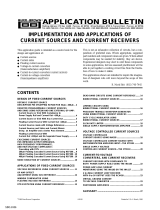 AB Amps 105 Application notes
AB Amps 105 Application notes
-
Texas Instruments TLV320AIC31EVM - User guide
-
Texas Instruments TLV320AIC32EVM - User guide
-
Texas Instruments TLV320AIC33EVM - User guide
-
Texas Instruments TLV320AIC3106EVM-PDK - (Rev. A) User guide
-
Texas Instruments DAC8555EVM User manual
Other documents
-
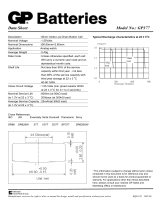 GP Batteries 040EU377U1 Datasheet
GP Batteries 040EU377U1 Datasheet
-
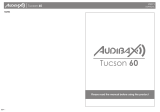 Audibax Tucson User manual
Audibax Tucson User manual
-
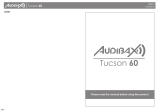 Audibax Tucson 60 Owner's manual
Audibax Tucson 60 Owner's manual
-
Omega SignalPro Series Owner's manual
-
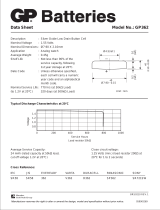 GP Batteries 042362A1 Datasheet
GP Batteries 042362A1 Datasheet
-
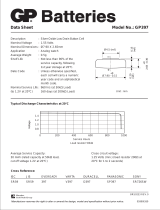 GP Batteries 042397A1 Datasheet
GP Batteries 042397A1 Datasheet
-
McIntosh MEN220 Owner's manual
-
E-Mu 1820 Owner's manual
-
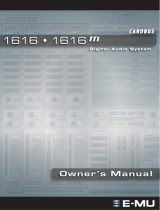 E-Mu 1616m Owner's manual
E-Mu 1616m Owner's manual
-
 Rockford Fosgate AF/2HD Installation guide
Rockford Fosgate AF/2HD Installation guide











